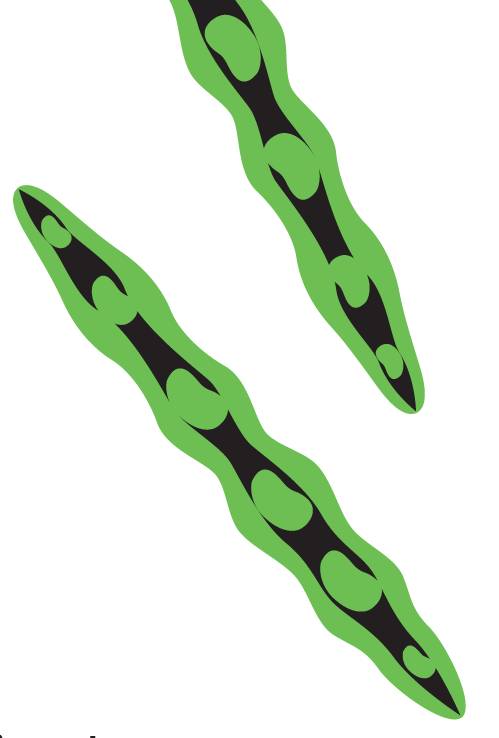Pisum sativum
![]()
Of all the veg in a zombie garden, peas can be the trickiest. Not that they’re to blame: they actively enjoy the cool and damp of a traditional British summer and don’t need high temperatures to germinate or masses of manure to crop.

The problem is this: they taste too good. Mice, slugs, pigeons, weevils, moth grubs – everthing wants to eat them. So by all means grow peas – never mind how sweet they are, the vitamin C they provide in spring should be reason enough – but be ready to jump through a whole load of hoops.
Peas come in three kinds. Mangetout provide young, flat pods; sugar snaps make eat-them-whole swollen pods; podding types are for fresh or dried peas. And the lower-growing the variety, the earlier it crops. So an ‘early’ pea plant that only grows to 50 cm high will be ready for harvesting two to three months after sowing, while a vigorous maincropper two metres high will be ready after three to four months. If you’ve only got room for one variety, stick to the big boys: they’ll give you a higher yield for the same amount of space.
All need support of some kind. Short, early varieties will be fine scrambling up tall, twiggy branches. Maincrops need much stronger supports, fitted out with something for their tendrils to cling to: an A-frame, wigwam or row of poles, either strung horizontally with lines of twine or with chicken wire fixed across them, will do the job.
Next comes protection. Unless you’re surviving in a sterile, wildlife-free zone, you’re probably going to need to use a combination of insect mesh and bird netting to keep peas’ enemies at bay. But that means almost daily net-removing-and-replacing so that you can perform the following duties:
■ killing slugs
■ replacing/refilling mousetraps
■ watering in hot, dry weather
■ getting rid of weeds (which peas seem particularly prone to)
■ harvesting to keep the crop coming
See what we mean about hoops?